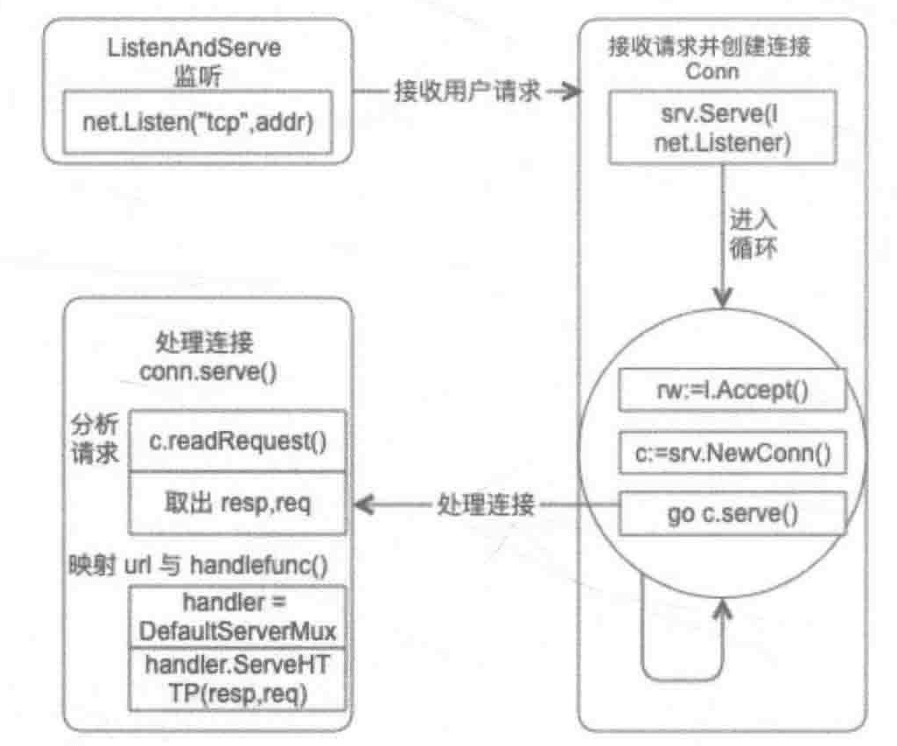请关注公众号


本节简单介绍go web编程并用go构建一个服务器。
例子:快速搭建一个go web服务器
执行
go run main.go
访问127.0.0.1:8080?name=zbp即可看到内容
我们针对上面的代码说明一下整个过程发生了什么。
1. 在main方法中,执行了两个方法 http.HandleFunc 和 http.ListenAndServe。
源码中HandleFunc方法如下
http.HandleFunc方法调用了DefaultServeMux(默认的ServeMux)的HandleFunc方法,而DefaultServeMux是http.ServeMux类型。http.ServeMux是一个http请求多路复用器,他可以将多个路径和路径对应的handler(处理函数)存储到一个map中。
http.ServeMux类型结构如下:
其中 m 属性就是存放 路径 和 handler的map,即路由表。
再看DefaultServeMux.HandleFunc(pattern, handler)方法的内部
它会先将sayHello封装为http.HandlerFunc类型(满足http.Handler接口类型),并将pattern("/")和封装好的handler添加到上面说的路由表中。
简单的说 ServerMux的作用有2个:保存路由表 和 当请求过来时解析请求中的uri并执行该uri到对应的handler方法(也就是sayHello方法)
2. 当调用ListenAndServe方法时,程序会委托操作系统创建一个套接字,并且绑定和监听8080端口,然后无限循环接收客户端连接和请求,在没有连接和请求到来的时候会阻塞主程序。由于没有指定ip因此相当于该程序对所有ip开放。第二参传入nil表示使用默认的ServerMux。
每当有一个客户端的新连接进来,ListenAndServe就会创建一个goroutine来处理该连接下所有的请求。
源码如下所示
在 c.serve()中做了很多的事情,但是最关键的事情是调用了ServeMux.match()根据请求中的uri获取到对应的handler处理程序(即封装了sayHello函数的Handler对象),并且调用其ServeHTTP方法,这个方法内部其实调用了注册路由时注册的方法(即sayHello里面的逻辑)。
在调用ServeHTTP时会传入http.Request和http.ResponseWriter对象,他们分别代表请求和响应。
整体流程如下所示

本节简单的介绍到这里,感兴趣的朋友可以参考《go web编程》一书
